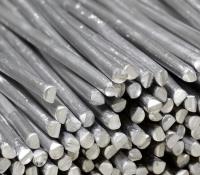 Add My Company
Add My Company
Sign In

Here at Adam’s Gas, we’re expert welding gas suppliers so we know it for a fact when we tell you that welding is something you want to be ticking off your ‘skills essential to learn’ list. It’s an essential, because whether your fixing a small break in a machine or giving life to a labour-saving device, the feeling of satisfaction from ‘doing it yourself’ is un-matched.
While it’s true that some jobs will require a keener and confident welder, there is much that can be done around the farm with a basic knowledge and skill level of welding.
The Beginning...
Before you begin your venture into welding, you need to ensure you have the right equipment; much of it is basic and will most likely be found in your average farm workshop anyway. Your basic, but essential equipment will include: a file, a wire brush, an angle grinder, and of course a welder.
To ensure your safe with this equipment, check that the leads of the welder are in good condition and that the electrode holder is undamaged. You also want to check that your helmet isn’t cracked or damaged in any way.
To get started on the welding, get yourself some steel plates as they’re great for practising on. Clean the plates with the wire brush or the grinder, ensuring the surfaces are free from rust, dirt and grease. This is an essential part of welding as it will teach you that it’s nearly impossible to get a clean and decent weld on a dirty or rusty piece of metal.
Striking
Attach the earth lead to the work piece and get some practise striking and maintaining the arc. For novices, this will most likely be the most difficult step. The arc is struck similar to the way a match is struck, with the end of the electrode being scraped along the work a short distance, and then lifted about 1.5mm. The end of the electrode must be kept at this distance from the piece to ensure a strong arc is maintained.
Don’t be afraid to experiment with the current by changing the current setting on the welder; the current setting depends on how thick the metal is and the size of the electrode being used.
The general rule is, the thicker the work piece, the higher the current needs to be, and thus a thicker electrode. If you’re finding that the weld is lumpy and/or not getting through the piece, and the arc is hard to maintain then the current is most likely too low.
On the other side of the coin, if the welder is burning through the steel too much, or if there are lots of spatters of weld at each side, then the current is too high.
If you really want to become a welding wizard and the ultimate DIY machine, get practising – it’s the only way to determine the correct current for the jobs you’re doing, and it will only come with experience.
We hope this has been an interesting and informative post for anyone interested in taking up welding, on the farm or otherwise!
If you’re looking to start a welding project yourself, and want to know more about the services we provide in that area, then call us on 01843 220168 and one of our friendly staff members will be happy to help!
For more information on On This Farm, He Did it Himself: A Beginner’s Guide to Welding on the Farm talk to Adams Gas
Enquire Now
List your company on FindTheNeedle.

